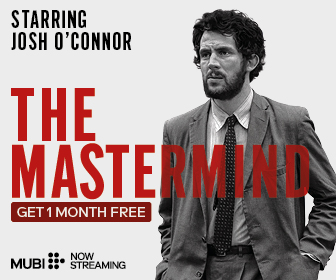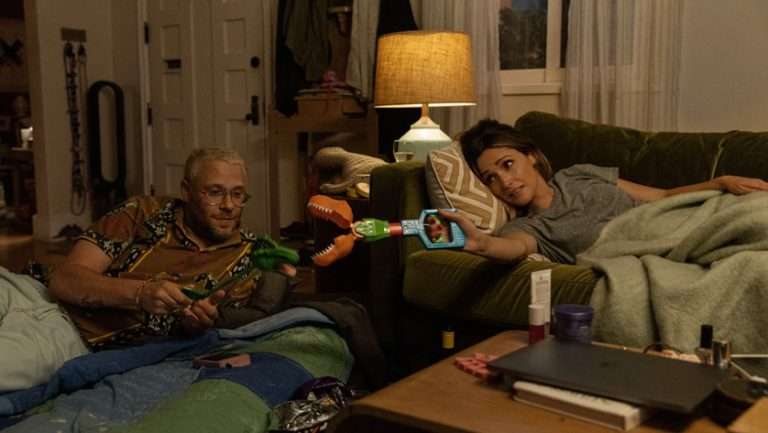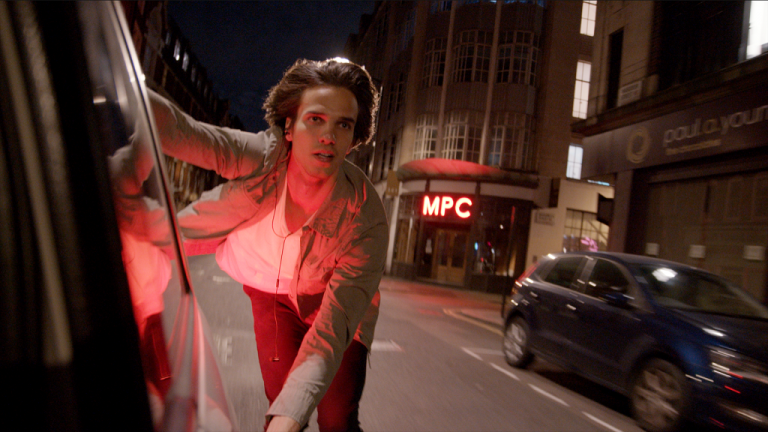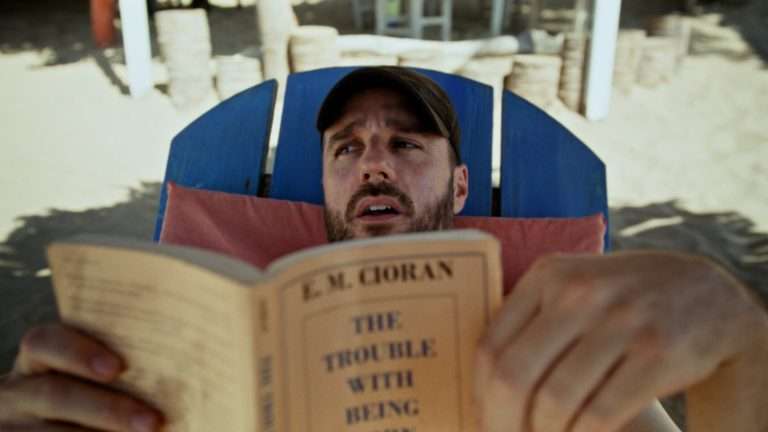Some people have a way with words. They don’t even need to make an effort to share the intimate or the profound. The common assumption is that reading helps them find just the right words to express themselves with depth and conviction. After all, the more you read, the better you understand the world. It’s the act of engaging with the rest of the world that can enable you to understand the depths of your own.
That, however, isn’t the case with every single writer or poet. Some live their lives detached from literary wealth, yet still find themselves drawn to these modes of expression. “Come See Me in the Good Light” follows a similarly gifted artist at a crossroads between life and survival.
The documentary, directed by Ryan White, revolves around Andrea Gibson, an acclaimed poet who rose to fame through their work as a spoken word artist. That open mic stage offered them a mode to be heard and to feel understood by a group of people who were captivated by their words. There’s poetry, and then there’s a performance aspect to this style that allows people to be unabashedly dramatic.
The poetry, in such cases, feels like someone inviting you to frighteningly personal aspects of their lives, and the act of performing it can feel like you’re exposing yourself to the world. Still, despite the potential fears, it can be liberating for anyone who has struggled with being accepted for who they truly are.
Gibson faced these struggles while growing up as a queer person in a small American town with little exposure to the rest of the world. They had an inkling that they couldn’t conform to the rigid gender norms, but didn’t know anyone with whom they could be honest about those thoughts. The time for honest self-expression came relatively later when they found those who understood and shared their aches and desires. Eventually, they discovered spoken word poetry, which led them to their wife and poet, Megan Falley. Their poetic styles, however, were vastly different.
Falley stayed away from poetic cliches while Gibson doubled down on them, hoping to present the truth that those cliches hold. Gibson also remained a poet of few words. At one point in the film, they recall an editor reviewing their poetry collection, telling them how they have used a select few words but only placed them in different places!
That approach, however, didn’t limit the poetic scope of their work, since what they may have lacked in vocabulary, they made up for it through their need for self-expression. It’s as if the world would stop moving if they didn’t share and elaborate on what they feel deep down in their heart. They led every performance with that thunderous force, where every word, phrase, and silence in between was filled with a burning passion.

Also Read: A Long Journey on Screen: LGBTQ Representation in Cinema
White’s work is exceptional in capturing the cause and the effect behind Gibson’s words, making every liberating moment feel like a weight off their shoulders. He makes the joy feel as palpable as the stress and burdens in their life. His gentle direction captures candid moments between Gibson and Falley through gorgeously lit frames, inviting us to be a part of their quiet, emotional warmth.
He presents them through a part of Gibson’s recent life, when they were struggling with an incurable cancer, which left them with excruciating physical and emotional pain. So, they couldn’t return to the life that they cherished. The pain kept them away from the stage that truly made them feel alive.
The documentary shares Gibson’s journey toward stepping back on that stage with a renewed knowledge of life and mortality. It feels even more intense since they had spent their formative years in a closet, losing hope in the possibilities of life. That’s why it’s heartbreaking to see them not having control over their life when they had found peace. White reveals the depths of their pangs through Gibson and Falley’s conversations in a way that mirrors the intimate nature of slam poetry. He feels like their companion on their journey, capturing the truth as it revealed itself through their casual dialogue.
Beyond the pain, White’s film brims with the joy of their co-existence and their longing to be in each other’s presence forever. Although sentimental, it never feels superficial. The sheer honesty of White’s direction, and the one that Gibson and Falley bravely exhibit simply through their presence, becomes the crux of this doc that rarely hits a false note.
It portrays the simple pleasures of their lives, while also exploring Falley’s vivid emotional landscape, where even casual observations about their relationship feel like secrets we are privy to. White’s gentle directorial approach effectively turns their journey toward a swansong into an intimate tale of lovers falling in love with each other anew. The film is primarily about fortitude in the face of the inevitable, but it also becomes one about the value of human connection.






![Cars 3 [2017]: Surprisingly Well-Made & Emotionally Involving](https://79468c92.delivery.rocketcdn.me/wp-content/uploads/2017/11/cars-3-768x384.jpg)


